The cannabis industry has been exploding in the U.S. throughout 2018 and 2019. Dispensaries, new products, grow supplies and research are all gaining traction.
The fact that the legal framework is shifting almost daily does not stop investors, researchers, and entrepreneurs from investing in this rising market.
Paid advertising is either tricky or straight up impossible for many cannabis-related products due to the terms of service of many advertising platforms.
Organic Google traffic and SEO are the new best friends of the cannabis industry.
Winning the top positions now will hold valuable growth opportunities as the market emerges, and SEO becomes more competitive.
The best time to invest in SEO is now. This article outlines a content marketing framework – not just for cannabis businesses.
I will be walking you through the keyword research and content creation process for SEO using a practical example and highlighting many detailed insights for keyword selection, search intent, and page outline.
Cannabis Is Rising
The two main products of the rising cannabis market are marijuana and industrial hemp. Today, many Americans have access to legal marijuana – medical or recreational.
Business Insider reported:
“Eleven states and Washington, DC, have now legalized marijuana for recreational use for adults over 21. And 33 states have legalized medical marijuana.”
A recent study released by Grand View Research showed that:
“The U.S. legal marijuana market size was estimated at USD 7.06 billion in 2016 and is expected to grow at a CAGR of 24.9% from 2017 to 2025. (…) The global legal marijuana market is expected to reach USD 146.4 billion by end of 2025.”
Disclaimer: Future-Proof Your Cannabis SEO
Before building an SEO strategy, check the terms of service of your platform and web hosting.
Make sure to future-proof your business by selecting providers that allow unusual businesses and edgy content. This includes payment providers as well.
It also might mean moving to an international provider.
Why Cannabis Loves SEO
I created one content piece for an ecommerce store at my previous agency. The store sells grow supplies for small indoor productions.
This highly relevant “how to” skyscraper feeds the top of the funnel with visitors:
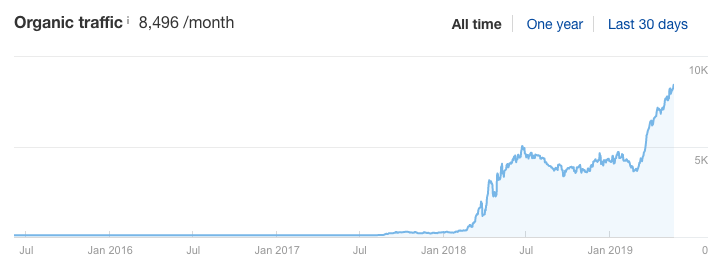
This content piece was created based on the principles outlined in this article.
Understanding SEO Opportunities
Detailed keyword research will uncover where everything is at.
Below, you will find sample data for cannabis, marijuana, hemp, CBD, tinctures, and seeds.
It will give you an understanding of the huge opportunities in search and the overall rise in search volume.
A nice trick by Tim Soulo from Ahrefs is using the content explorer of their tool and setting referring domains to below 5. You will find creative content ideas that rank without many links – add them to your keyword research.
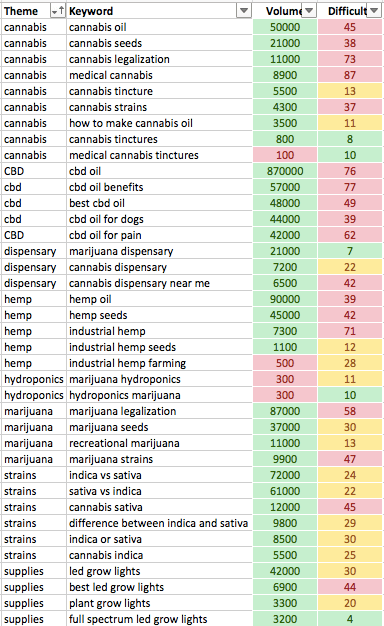
Let’s investigate some keywords in greater detail.
An interesting target keyword would be “cannabis tincture” with a keyword difficulty of only 13/100, even though the search traffic has been rising for years:
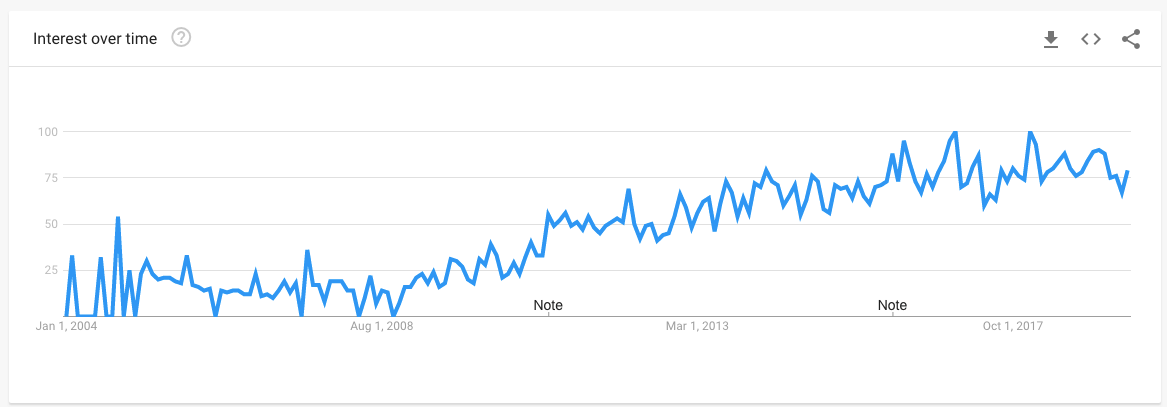
This keyword mainly works for ecommerce stores with transactional modifiers as “buy online,” “prices,” “best,” etc. But it could also make a great educational piece or skyscraper.
However, for the sake of this exercise, let’s dive deeper into the cannabis tincture universe.
A Page 1 review for this keyword reveals movements and changes in the top positions, even in the last 12 months – a great opportunity for your website to rank as well.
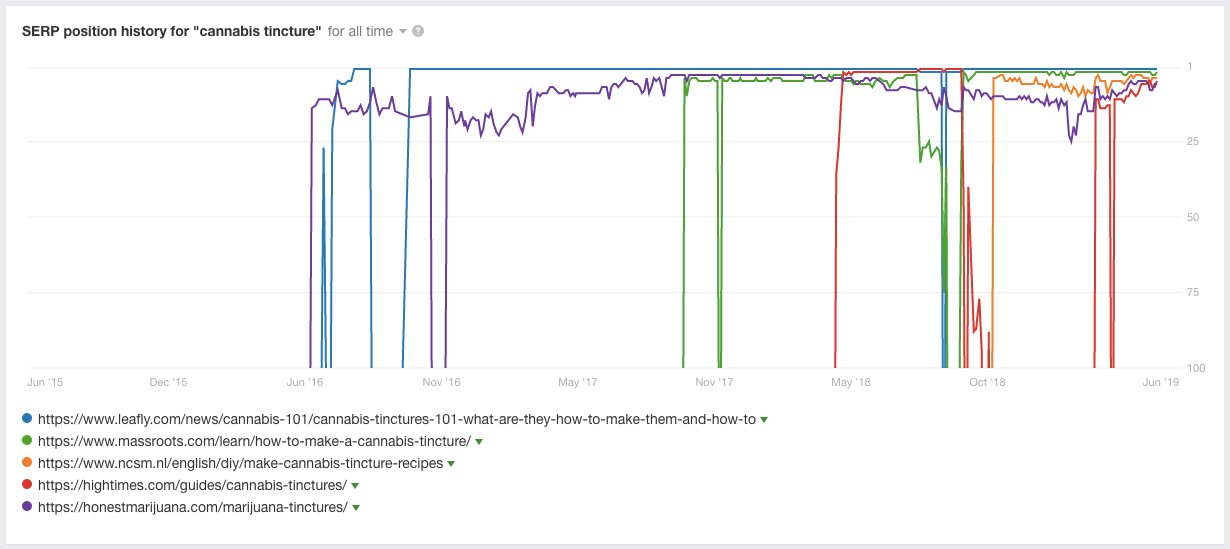
It also reveals that Google ranks pages that are optimized for “cannabis tincture,” as well as “marijuana tincture.” So, if we check the “marijuana tincture” chart, we see a similar result.

This means that Google understands that “cannabis tincture” and “marijuana tincture” both have the same search intent.
In this case I conclude: One target keyword cluster per page, and one page per target keyword cluster. This avoids keyword cannibalization and several pages of your own competing for the same keyword term.
Keep in mind: 2019 keyword selection is not as granular as it used to be. I would create one piece for both queries to avoid keyword cannibalization.
When competing with millions of pages on the web for the top 3 positions, why cannibalize and compete with yourself?
When choosing keywords and content opportunities, I suggest to review:
- Average monthly searches and the trend over time.
- Search intent: Does the keyword match your service/product?
- Page 1: Position changes in successful websites.
- Domain and page authority of the ranking pages compared to mine.
- Keyword difficulty.
How to Choose Target Keywords Based on Difficulty
Which keyword difficulty is the right difficulty for your website?
Yes, lower is better (easier), and if you have a brand new website, stick below 10.
But if you have an established website, here is my trick to find the keyword difficulty that you’ll be able to successfully rank for quickly.
Pull a ranking report, filter by rankings between 1 and 10 (or 1 and 5 if you have many successful keywords).
Then put this keyword list into the “keyword explorer” (e.g., Ahrefs or similar), export, and calculate the average keyword difficulty.
In the case, the website has more than 900 keywords ranking on page 1. The average keyword difficulty is 28. Which means, I can comfortably choose a difficulty up to 28 and expect to be ranking well with time (and some SEO love).
Content Planning & Page Outlines for Cannabis SEO
From there, you can start to plan a page outline and supporting articles.
Tools like Answer The Public allow the ability to identify relevant questions that users have around your topic of choice.

And while this visualization is fun to look at, make sure to download the CSV, which contains more than 400 questions. Plug them into your keyword tool to find those with relevant search volume:
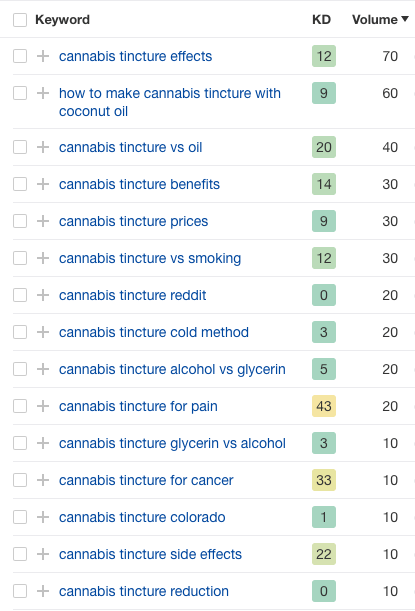
Ahrefs also offers a “question” section within the keyword explorer for even more ideas.
You can use these keywords and ideas to build sections within your page outline.
A sample outline for your guide on cannabis is:
H1: Everything you need to know about cannabis tincture
H2: Cannabis tincture effects
H2: Cannabis tincture benefits
H3: Cannabis tincture for pain
H3: Cannabis tincture for Cancer
H2: Cannabis tincture side effects
Supporting Articles Create Relevance
The keyword “how to make cannabis tincture” would make a good supporting article.
It allows for internal linking to your main piece, while it covers a different target audience that is looking for DYI solutions instead of buying a prepared tincture.
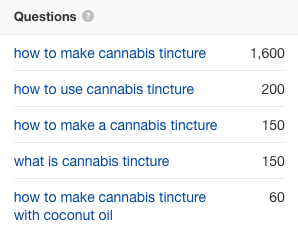
When reviewing the top 3 results, they all cover the “how to make” topic within the main piece.
It depends on your target audience and how important the “how to make” keyword is for you whether you are willing to invest into a new piece – or just add a section.
Ideally, you will want to create 3-5 supporting articles when covering a new topic or keyword category. It will allow you to build out the silo and create relevance – and they also make great backlink targets.
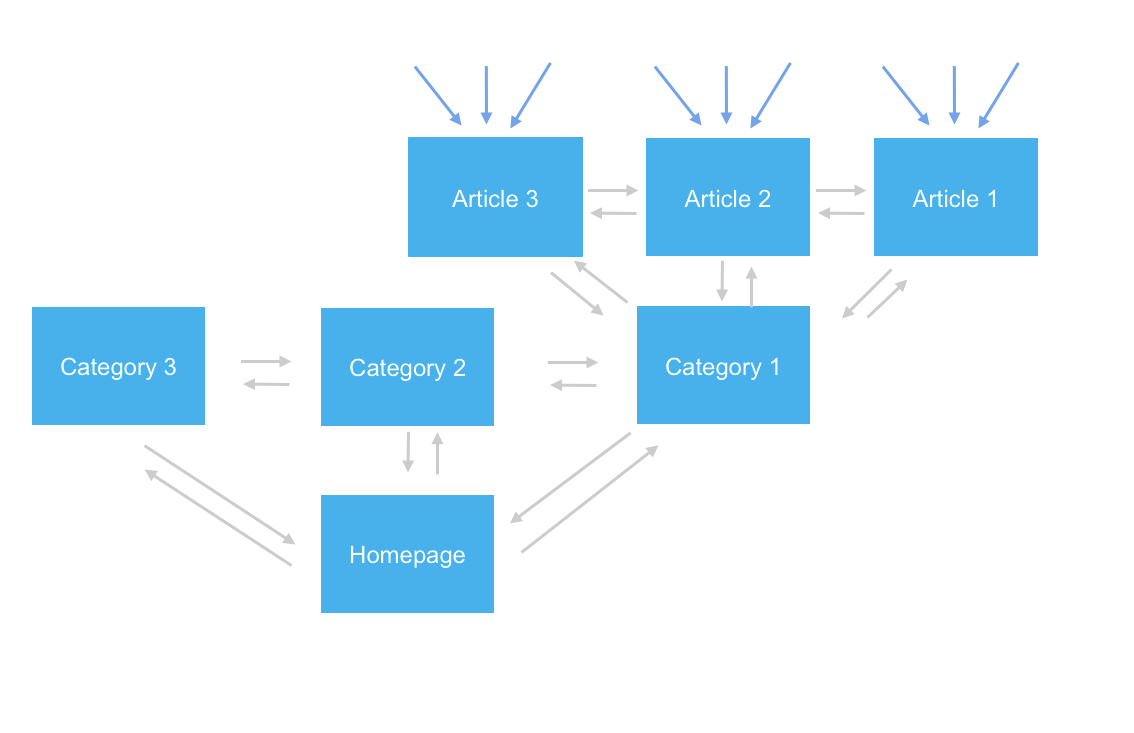
For cannabis tincture, the supporting articles could be:
- How to make cannabis tincture
- Marijuana tincture recipe
- How to use cannabis tincture
And don’t forgot to optimize your shop category page for transactional modifiers like “buy online”.
Word Count, Variations & Page Elements
We have now created a content plan for four articles: One main piece on tinctures and three supporting articles.
For each of these pieces, you will want to research relevant questions and outline the page using the numerical headlines.
We now want to give our page outline the final touches. I use Page Optimizer Pro which uses statistical relevance to compare my page against successful websites.
By analyzing the top 5 results, I can see that my target word count for the page is: 1,657 words.
We can update the page outline using the on-page SEO recommendations for the target keyword. This turns an editorial briefing based on user interest into a briefing targeted toward Google’s needs. Basically an SEO-friendly facelift of your content.
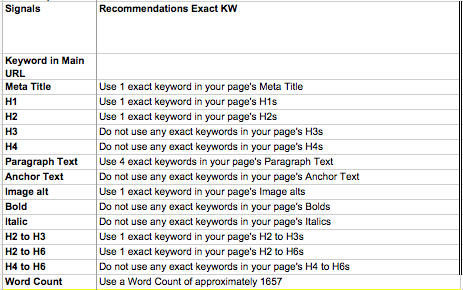
The tool also pulls variations and contextual keywords, and creates the same on-page SEO recommendations.
Relevant variations to my target keyword are:
- cannabis
- tincture
- tincture cannabis
- thc
- marijuana tincture
- thc tinctur
- tincture’s
Semantically related keywords are:
- tinctures
- overview
- asa
- legal info
- leafly
- lounges
- social
- social lounges
- id
- oil
- faqs
- dispensaries
- butter
- events
- legal
- step
- state
- alcohol
- cannabis tinctures
- data
- image
- effect
- news
- everything
- want
- recipe
- info
- large
- fine
- days
- thca
- sign
- add
- grams
- like
- action
- cannabutter
- glass
- cheesecloth
- know
- made
- final
The tool also delivers some insights on the usage of page elements such as images, video, and lists.
Start Writing SEO Content for the Cannabis Industry
With that, we have all we need to create a content piece that is based on:
- Data-driven keyword research.
- User intent and the type of content needed.
- Statistically relevant ranking factors, including keywords and word count.
Now, all that is left to do is to write 1,657 words of high-quality content.
Now it’s your turn!
Try applying some of these advanced content tricks to create a new piece that both users and Google will love.
More Resources:
- How to Grow Your Cannabis Brand with Digital Marketing
- 5 Ways to Easily Set Up an SEO Content Strategy
- A Complete Guide to SEO: What You Need to Know
Image Credits
In-Post Image: Business Insider
All screenshots taken by author, June 2019




